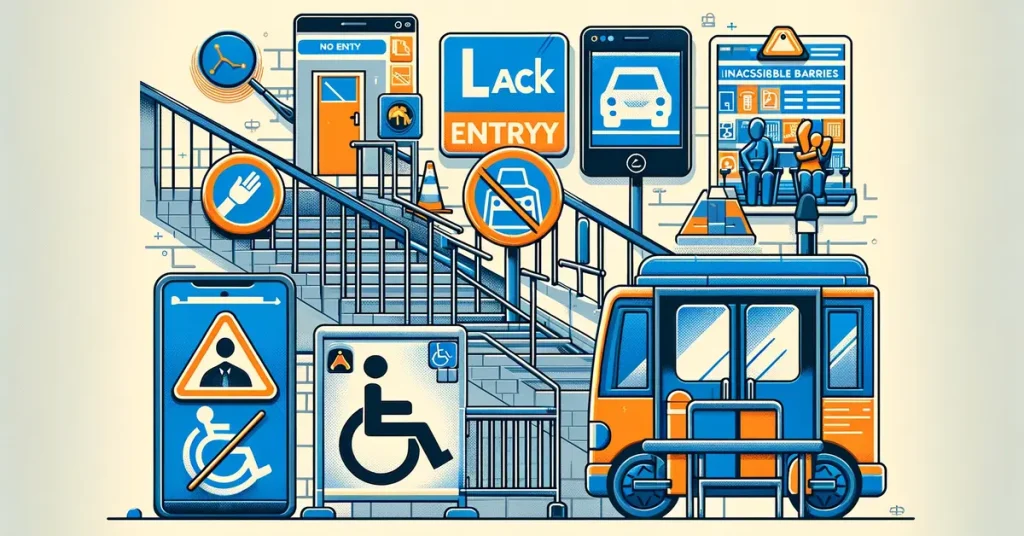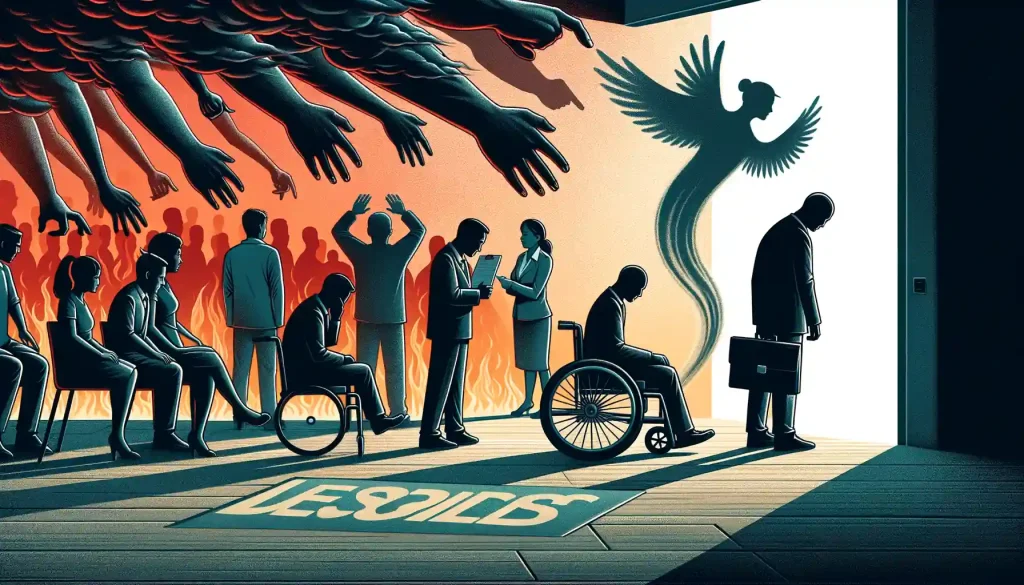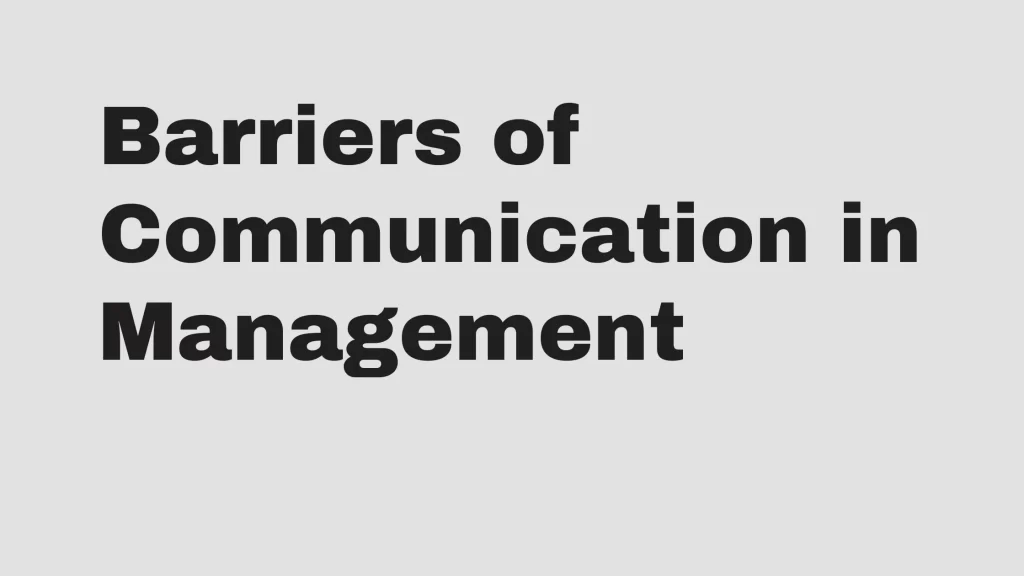Understanding the barriers faced by persons with disabilities is vital in promoting inclusivity. It’s more than just the physical challenges; the World Health Organization highlights that these individuals often encounter profound challenges due to the limitations of their disabilities.
Web accessibility is a crucial area to consider. Not all people with disabilities face obstacles in digital content, but those with different types of disabilities encounter various barriers. For instance, a person who is blind experiences different challenges than a person with limited vision.
Contents
5 Barriers for Persons with Disabilities?
Lack of Accessibility
Accessibility is a fundamental right, not a luxury. Unfortunately, many societal structures still fail to provide enough accommodations for persons with disabilities, leading to exclusions and various types of difficulties. Lack of accessibility comes in many forms, let’s discuss a few more specifically.

Physical Barriers
When we talk about physical barriers, often the first pictures that come to mind are missing ramps or non-interactive equipment at fitness centers. But, these forms of exclusion go beyond just physical limitations. The lack of accessible transportation, for example, can severely intensify the social isolation people with disabilities experience. It’s about more than just wheelchair ramps and disabled car spots – it’s about creating an environment that includes and caters to everyone’s needs.
An example could be the presence of steps and curbs on a sidewalk which prevents a person with limited mobility from going into a building or mammography equipment that requires women with disabilities to stand. Similarly, another example could be the absence of weight scales that accommodate individuals with challenges standing up or desks or counters that are unaccommodating for people using wheelchairs.
Moving beyond physical barriers such as these, there’s an even more important factor that often lies overlooked – social barriers.
Digital Barriers
In today’s technology-driven world, digital accessibility holds immense importance. This is especially true for individuals who might not encounter physical barriers but face numerous restrictions in the digital field. For instance, a person who is blind or has limited vision might face completely different challenges on the web than a person with a physical disability.

Many digital platforms fail to provide essential features to ensure an inclusive experience for everyone. Web accessibility, for instance, is one such field that demands urgent attention. Inaccessible digital content can drastically limit a person’s ability to gather information and communicate, thereby leading to a form of digital isolation. Examples might include online documents and multimedia that lack alternative text descriptions or websites that aren’t compatible with screen readers.
Discrimination and Stigma
One of the most insidious barriers faced by people with disabilities is attitudinal barriers. This term refers to the critical ways society perceives and interacts with individuals who have disabilities. More often than not, these societal attitudes breed discrimination and foster a stigma around disability.
Two key aspects of attitudinal barriers are particularly harmful: prejudice and stereotyping. Both attitudes tend to undervalue and marginalize people with disabilities. Let’s dive deeper into these harmful mechanisms and their impacts on personals with disabilities.

Prejudice in our society often manifests as individuals viewing people with disabilities as less than or subpar. It’s this prejudice that seeps into our institutions and culture, and leads to discriminatory actions. A typical case of prejudice is when people assume that they are doing a favor by offering help to people with disabilities, rather than viewing it as a normal social interaction. This type of behavior can leave individuals with disabilities feeling pitied and can degrade their self-esteem.
Stereotyping, on the other hand, can be even more subtle but just as damaging. Throughout our society, it’s common to hold false beliefs or assumptions about individuals with disabilities. These stereotypes can make people with disabilities feel uncomfortable and can invisibly lead to their exclusion.
While more and more people are starting to understand the harm entrenched in prejudice and stereotyping, it’s still a widespread issue. It bleeds into physical barriers and exacerbates the challenges people with disabilities face in navigating public spaces. Only by addressing these deeply rooted attitudes can we improve the accessibility of our environments and dismantle these hurdles.
Eventually, how we approach this attitudinal shift matters a lot. It’s high time we changed our perspective and worked hand in hand with the disabled community. By transforming our way of engagement, we can nurture a more inclusive society for all. After all, it’s understanding and inclusion that will dissolve these barriers.
Economic Barriers
As we delve deeper into the variances of the daily obstacles individuals with disabilities encounter, there’s a need to highlight the economic barriers. These decelerate the inclusivity progress and amplify the validity of stereotypes. Let’s now examine these economic hurdles, beginning with unemployment and underemployment.
Unemployment and Underemployment
The issue of joblessness and inadequate employment among persons with disabilities (PWDs) is significantly daunting. It’s not only about the absence of financial resources. It’s the adverse impact this predicament has on their psychological well-being and self-esteem.
Here’s a fact you ought to consider: Unemployment leads to higher levels of psychological distress, depression, and lower self-esteem. The emotional cost that unemployment inflicts on the lives of PWDs is heavy. Multiple studies suggest that for most PWDs, employment contributes to their sense of identity, financial security, and opportunities for social interaction.
| Impact of Employment | Contribution |
|---|---|
| Sense of Identity | It enables PWDs feel valued and take pride in their abilities, rather than their disabilities |
| Financial Security | PWDs become financially independent, alleviating stress and uncertainty |
| Social Interaction | It creates opportunities for engagement, networking, and the chance to integrate with society |
Regrettably, systemic barriers such as discriminatory laws, outdated policies, inadequate facilities, and attitudinal bias often stand in the way of securing productive employment for these individuals. As they struggle to find employment, the consequences reach far beyond just the financial implications; they often encounter mental health problems or feelings of social exclusion.
Speaking of underemployment, it’s an overlooked aspect of the economic barriers faced by PWDs. Often, they are given roles that do not utilize their full potential or match their skill set. This issue of underemployment further contributes to the unemployment crisis, as their unique talents and capabilities remain unexploited.
We see that most of these issues revolve around prejudice, lack of understanding, and reluctance to be accommodating. The actionable steps to mitigating these challenges include strengthening of laws, promoting education and advocacy, and genuinely learning about the vast potential these individuals possess. As our societies strive for inclusivity, understanding these economic barriers can truly make a difference by ensuring that PWDs are not restricted by their means.
Limited Educational Opportunities
When we explore the economic barriers faced by individuals with disabilities, it’s impossible to overlook the significance of limited educational opportunities. IDEA (Individuals with Disabilities Education Act) has certainly made strides over the years in offering educational assistance to students with disabilities. Despite these important advancements, the system has a problem that undermines its full impact – adequate funding.
The original intent of IDEA was commendable. It aimed to cover up to 40% of the programming expenses for students with Individualized Education Programs (IEPs). Yet, today, the funding scenario is far short of this target, with the government covering less than 18% of the total costs for IEPs. In turn, this financial shortfall limits the comprehensive roll-out of educational support these students need.
But funding isn’t just insufficient – it’s frequently misused. My findings show that numerous schools receiving IDEA-related funding are not in compliance with its guidelines; they fail to meet the goals outlined by IDEA. Such misuse of resources further fuels the problem, leading to potential misuse and ultimately, diminished effectiveness.
So, how do we tackle this issue? One way is by strengthening laws which enforce adherence to IDEA’s objectives for schools receiving related funding. Another is to drive extensive advocacy campaigns that spotlight the dire funding situation for educational programs supporting disabled students. Real change, though, will stem from extending the conversation to include companies like Microsoft, which understand the connection between technology and accessibility.
As an example, Microsoft recently announced an initiative to develop more accessible technology, which could break down barriers to communication, interaction, and information for people with disabilities. While this isn’t directly related to IDEA or government funding, the potential for digitization to open doors for students with disabilities really cannot be overlooked. Such endeavors reinforce the belief in the untapped potential of disabled individuals and could help close some of the gaps in workforce accessibility resources.
Reshaping educational opportunities—both in schools and beyond—is crucial. Remember, when we strengthen the foundation, we’re likely to see a more robust structure. It’s high time we turned our attention to providing strong, supportive spaces where individuals with disabilities can thrive.
Healthcare Disparities
A significant barrier faced by individuals with disabilities is the lack of equal access to quality healthcare. This problem isn’t confined to one corner of the globe, it’s a worldwide issue. Let’s dive deeper into the scale and severity of these healthcare disparities.
In a perfect world, having a disability shouldn’t make it harder to receive healthcare services. But sadly, in our society, it often does. Socioeconomic factors, communication barriers, inadequate training of health care providers – they all conspire to create a considerable healthcare disparity for persons with disabilities.
One high-priority concern in healthcare is that individuals with disabilities are often not provided with the tools and accommodations they need to manage their health effectively. A key component of this is patient education. Without proper education on their medical situation, it’s extremely hard for them to take control of their health. Yet I often encounter patients who’ve been left in the dark concerning their diagnoses.
Digital health, although still in its infancy, is starting to show its potential for overcoming these obstacles. Telemedicine, in particular, offers a ray of hope. The possibility to consult with healthcare professionals without leaving home is a boon for many individuals with disabilities who find transportation a significant challenge.
However, access to digital health is hampered by the digital divide. Not everyone has access to high-speed internet or the necessary devices for telehealth consultations. In the US, for example, rural areas are particularly hard hit by this digital divide.
There’s a long way to go when it comes to correcting healthcare disparities faced by individuals with disabilities. Moving forward should involve making healthcare services more accessible, prioritizing patient education, and pushing for digital inclusion. If we do this, then we’re heading in the right direction.
In the next section, we’ll look at another barrier that creates obstacles for persons with disabilities – Accessible Transportation.
Conclusion
Tackling the barriers faced by individuals with disabilities is no small feat. Yet, it’s a task we must undertake with urgency and determination. The disparities in healthcare access are a stark reminder of the work that lies ahead.
We must address socioeconomic factors, bridge communication gaps, and enhance healthcare provider training. Patient education is a crucial piece of this puzzle, empowering individuals to take charge of their health. Digital health solutions, like telemedicine, hold significant promise.
However, the digital divide threatens to leave some behind. It’s clear that to truly make a difference, we need to prioritize accessible healthcare services, patient education, and digital inclusion. As we turn our attention to the next hurdle – accessible transportation – let’s remember the importance of breaking down these barriers, one step at a time.
Boko Ducky has over 10 years of experience in helping individuals and organizations improve their communication skills.



